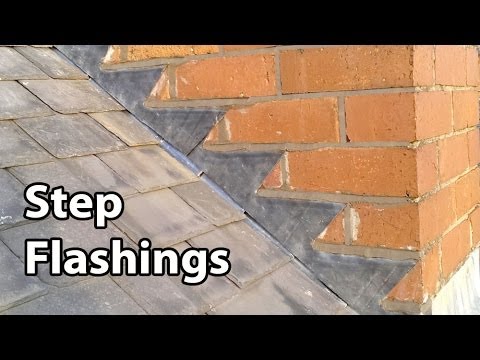 Step flashing is a type of roof flashing that permits a roof to abut brickwork. The ‘step’ refers to the pattern that is being created in the lead. The model is being set up by a series of cuts which permits the lead to penetrate between the bricks. Creating the steps helps bricks to remain un-cut and undamaged. It also makes the bricks pleasing.
Step flashing is a type of roof flashing that permits a roof to abut brickwork. The ‘step’ refers to the pattern that is being created in the lead. The model is being set up by a series of cuts which permits the lead to penetrate between the bricks. Creating the steps helps bricks to remain un-cut and undamaged. It also makes the bricks pleasing.
Continuous flashing against a sidewall is one way to install a roof, but it’s not the correct way. It may seem as if a single piece of flashing would offer more protection than many pieces of step flashing. But it doesn’t work that way. Once even a small section of roofing cement fails, you’ll have a leak. Each additional rain adds more water, and before you know it, you’ve got rotted wood.
Step flashing offers far better protection from leaks, because even if a single piece of step flashing fails, the water just hits the next lower piece. That flashing directs the water onto the shingle and the water drains down the roof.
There are two types of step flashing on a roof. When they are not done right, they can lead to leaks. ‘Step and cover’ flashings are useful for profiled tiles. Step flashings are however sued for slates as well as double overlapping flat profile tiles together with lead soakers.
Step and cover flashings are easy to fit since they incorporate both the ‘step’ and ‘cover’ aspects of flashing. The cover folds over the highest part of the roof. It is then dressed with the lowest point thereby making the roof waterproof in a straightforward manner since water rolling down the flashing surface is trapped in the lowest portion of the roof tile straight down to the bottom of the roof and gutter.
This type of flashings is not suitable for small flat non-interlocking tiles. This is due to the absence of the high and low peaks which are needed to make the roof waterproof.
Step flashing is often used on both man-made and natural roof slates. It is also used on plain flat tiles having a double lap. It is simple to make and also similar to step and cover flashing. It does not have the cover aspect. This type of flashing requires lead soakers to render the roof waterproof. This appears to outwit a lot of builders as well as some roofers. It is, however, simple and also fast once the basics are understood.
Would you like to learn more about step flashings? Call Columbus Roofing Systems today for your free roofing estimate.
